What to Consider When Choosing a Cat Breed
Cat Breed come in all shapes and sizes, and there are dozens of different breeds to choose from when looking for a new feline friend. With so many options, how do you decide what kind of cat is right for your family? Here are some key things to think about as you embark on your cat quest:
Your Lifestyle and Activity Level
An active, playful breed like the Siamese can get restless and even destructive if left home alone all day without proper stimulation. On the other hand, a more easygoing Persian cat may be happier lounging around while their human is at work. Consider your normal routine – do you work long hours or have an erratic schedule? Do you like to play and interact with pets when home? Matching a cat to your lifestyle will lead to better behavior and a happier kitty overall.
Desired Personality and Temperament
Cats have very distinct personalities, even within the same breed. Think about the demeanor and qualities you envision for your perfect pet. Want a friendly, social butterfly? The outgoing Maine Coon has a reputation for getting along well with everyone. Dreaming of a cuddly lap cat? Search for breeds that reach peak coziness potential like Ragdolls. There are clever cats, vocal cats, and even cats bred to meet children’s needs. Determining your preferred feline temperament can really narrow the options.
Grooming Requirements
While all cats need brushing, some long-haired breeds like Persians require extensive, daily coat upkeep to prevent matting. Short-haired varieties such as the Sphynx conversely need additional bathing and skin care that furry cats usually don’t. If keeping a high-maintenance show cat isn’t realistic for your schedule, opt for an easy-care shorthair.
Health and Genetic Issues
Some purebred cats are unfortunately prone to inherited health problems related to breeding defects. Do your homework to understand common illnesses associated with any breed you consider. This can help you make an informed decision or prepare properly to care for certain needs if you decide to welcome a special needs cat into your home.
Thinking through these key considerations before searching for specific breeds can set you up for smarter cat selecting success!
Most Popular Cat Breeds
While feline favorites vary widely between regions and individuals, a few breeds consistently capture hearts and top popularity charts around the world. These classics have earned widespread acclaim for their friendly personalities, striking appearances and superstar cattitude. Say hello to the world’s most popular pedigreed kitties!
Siamese Cats
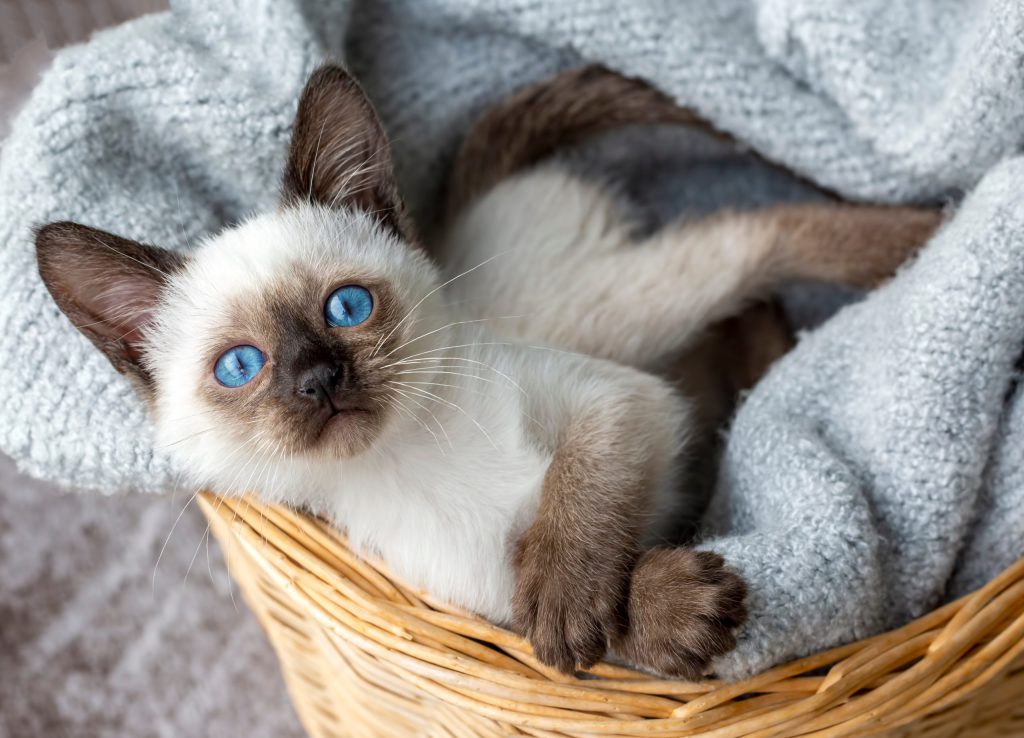
With their striking color points, big baby blues and outgoing purrsonalities, it’s no wonder the Siamese is among the most popular cat breeds globally. They love being involved in family happenings and will supervise your every move with chatty curiosity. Despite what you may have seen in Lady and the Tramp, modern Siamese tend to be very social and friendly.
Some key facts about these vocal blue-eyed beauties:
- Origin: Thailand, where they were revered as royal pets
- Size: medium
- Lifespan: 11-15 years
- Personality: active, social, smart and very vocal
- Care level: moderate
For fans of talkative cats who consider themselves fascinating feline royalty, the Siamese certainly fits the bill!
Persian Cats

With their long, flowing coats and sweet, gentle dispositions, regal Persian cats have charmed their way straight into millions of hearts worldwide. Their beautiful features even inspired the appearance of cartoon icon Hello Kitty! Beneath their elegant ruffs lies a calm, loyal companion who enjoys a pampered palace lifestyle.
Fun facts about these fluffy royalty:
- Origin: Persia (modern-day Iran), bred for luxury and companionship
- Size: medium to large
- Lifespan: 10-15 years
- Personality: calm, loyal and gentle
- Care level: high (require extensive daily grooming)
For families seeking a devoted lower maintenance friend, Persians make loyal and loving furballs of fabulousness. Daily brushing is a must though for preventing pesky mats!
Maine Coon Cats
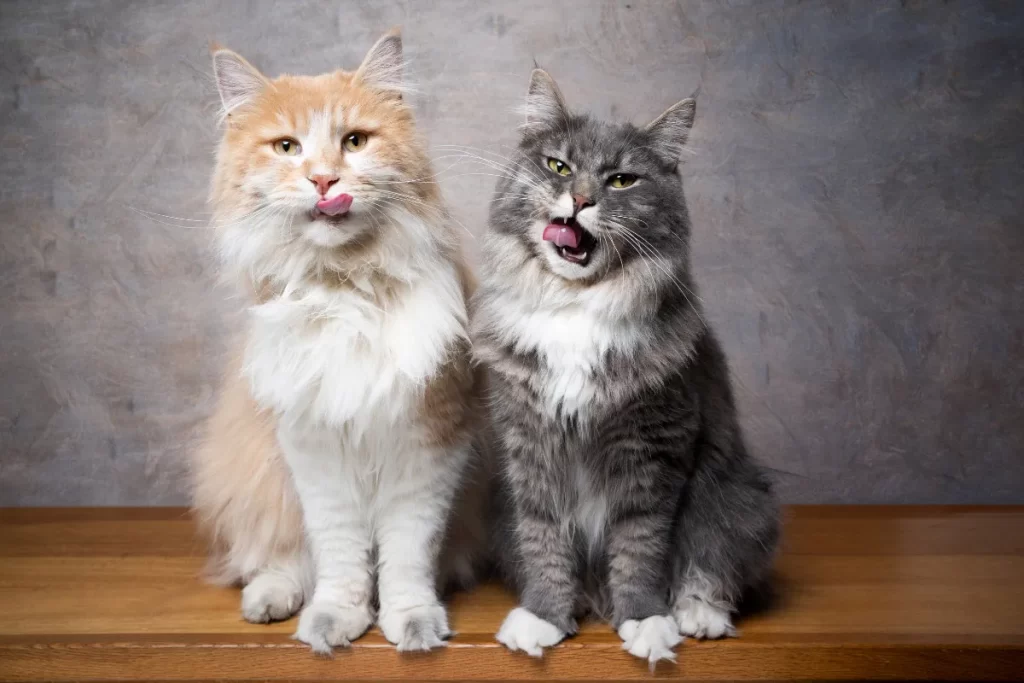
Hailing from New England, the Maine Coon is as all-American as apple pie and currently holds the title of most popular pedigreed cat breed in the United States. Their claim to fame stems from their super-sized proportions, plush coats and winning personalities that cozy up quickly even with strangers.
Fun elements of their folklore origins:
- Myth says they descended from bobcat and racoon pairings (likely not true!)
- Used to be popular ships’ cats thanks to strong hunting skills and companionship
- Often called American Longhair in Europe and international cat fancy circles
Some defining Maine Coon features:
- Origin: New England region of Northeastern United States
- Size: very large! Females 8-12 lbs, males 15 lbs+
- Lifespan: 9-15 years
- Personality: friendly, social and very smart
- Care Level: moderate (requires regular brushing of thick fur)
This American sweetheart has won worldwide fame as a friendly gentle giant that plays gently with kids. Most Maines seem to intuitively understand little humans still learning pet manners, making them ideal for households with toddlers and tweens alike. Their intelligence also facilitates training if boundaries need reinforcing. And fluffy Maine Coons love adventure – be prepared for them to retrieve toys and go on walks!
Rare and Unique Cat Breeds
Beyond the usual suspects prowling around neighborhoods lies a fabulous realm of rare cat breeds with unique looks, histories and personalities. Tracking down these unusual pedigrees can require some sleuthing, but their novelty and wow-factors sure don’t disappoint!
Ragdoll Cats

With their stunning light blue eyes, colorpointed patterns and uber-soft bunny-like fur, exquisite Ragdolls resemble living plush toys. And their personality matches… these laidback lovebugs go completely limp when cuddled, earning them the nickname “puppycat.” Strong bonds with their humans lead them to follow everywhere in dog-like fashion. Due to docile temperaments, they ranked as America’s 3rd most popular cats in 2023.
Some fun facts on these cuddly kitties:
- Origin: California in the 1960s when a white longhair named Josephine produced an exceptionally sweet litter
- Size: large
- Lifespan: 12-17 years
- Personality: extremely affectionate, docile and loyal
- Care Level: moderate (requires regular grooming to prevent matting)
For families desiring an easygoing floofball friend that plays fetch and greets at the door, this breed makes an unbeatable companion!
Sphynx Cats

Hairless and oh so unusual, this nearly naked cat breed turns heads wherever it goes! Contrary to slimy sci-fi film depictions though, the Sphynx feels like warm suede to the touch. And what it lacks in fur, it makes up for in humor, energy and clownish charm. These silly extroverts enjoy showering their beloved people with quirky antics and kisses galore!
Fun naked tidbits:
- Origin: natural hairless kitten mutations in Canada circa 1960s
- Size: medium to large
- Lifespan: 8-14 years
- Personality: extremely affectionate, outgoing, silly and smart
- Care: requires weekly bathing
For an animated alien-looking enigma that acts more like a dog, this bald beauty makes a delightful oddball addition to the right family. Just be prepared to moisturize all those wrinkles!
Norwegian Forest Cats
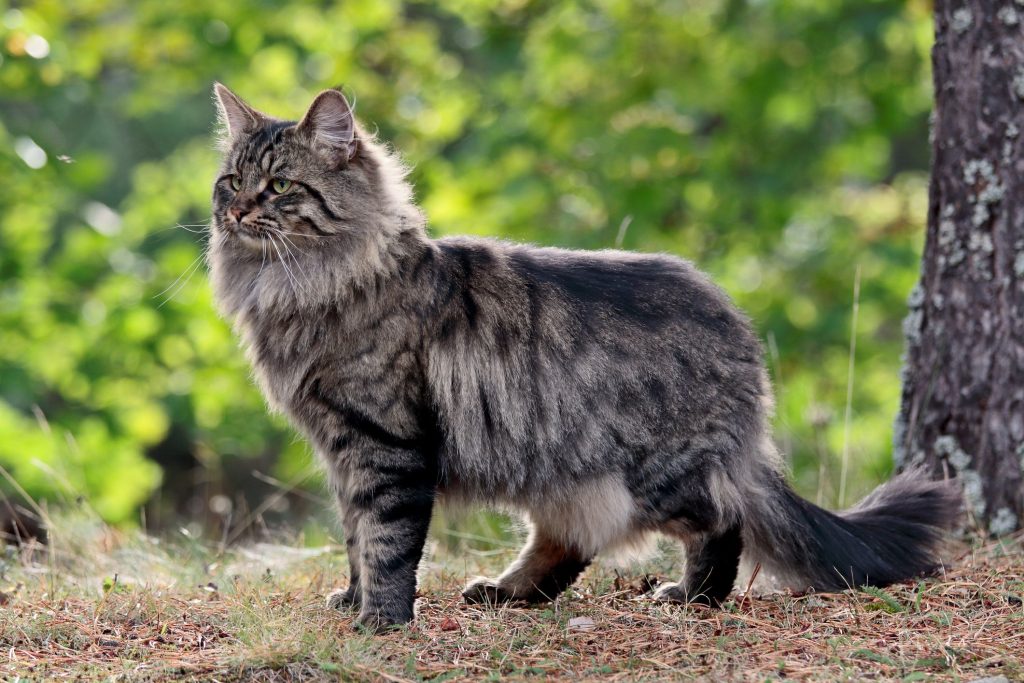
Resembling a children’s book illustration sprung to furry life, the gorgeous Norwegian staked its claim to fame as the national cat of Norway. Its long coat, lynx-like ear tufts and snowshoe paws equip this natural breed well for cold climates, hearkening back to Viking ship days. Despite imposing size, these gentle giants boast remarkably sweet dispositions.
Fun facts on these Scandinavian sweeties:
- Origin: ancient natural landrace from Norway
- Size: large and longhaired
- Lifespan: 14-16 years
- Personality: gentle, loyal and generally quiet
- Care Level: high (that glorious fur requires lots brushing!)
For folk wanting a conversation-starting cold weather cuddle champ, this Nordic breed beauty checks all the cozy boxes!
Best Cats for First Time Owners
Bringing home your very first cat creates such feline-induced excitement… followed swiftly by panic as the responsibilities sink in! Choosing an easygoing breed helps first-timers adjust smoothly to the curves and quirks of cat parenthood. These top starter options rank as generally healthy, adept at training and less likely to get into too much mischief while left to their own devices.
British Shorthair

With their round babydoll eyes, plush fur and happy smiles, British Shorthairs resemble adorable stuffed animals come to animated life. These gentle charmers make devoted and polite companions, earning them the nickname “teddy bear cat.” They adapt well to apartments since requiring less space than active breeds. Though quiet by nature, Brits still appreciate interactive play sessions with favorite humans.
Purrfect for newbies because they are:
- Extremely laidback and gentle
- Eager to please owners
- Very affectionate yet content to chill solo when you’re gone
- Simple to groom thanks to short dense coat
Ragdoll
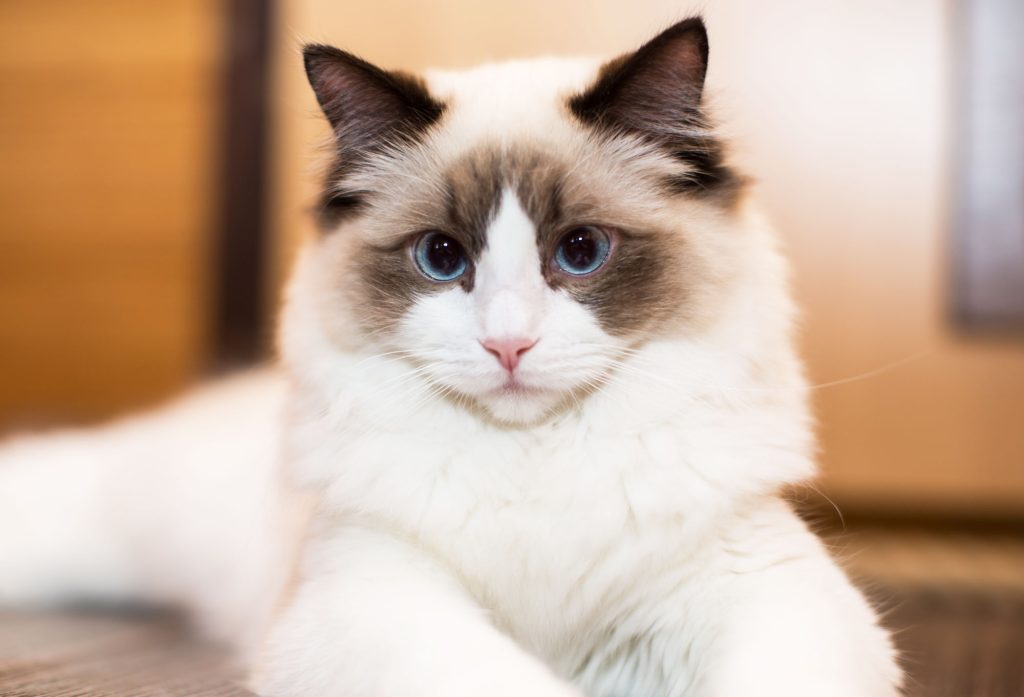
Those seeking more interactions from their furry roommate may prefer a playful, ever-loyal Ragdoll. As mentioned previously, these velvety lap charmers earned acclaim for their dog-like tendency to follow people through the house. Their placid personalities and cuddly nature ensure they’ll ameowse even the most novice of cat owners. Due to laidback dispositions, Ragdolls generally avoid leaping onto counters or shredding drapes even when left unsupervised.
Ideal starter kitty because:
- Affectionate lovebug personality
- Peaceful and gentle temperament
- Lowish activity levels match apartment living
- Soft silky coat rarely mats
Either of these sweet snugglers can tutor first-timers wonderfully in the curious world of cats!
Best Cats for Families with Children
Raising kids in chaotic households already feels a bit like corralling wild animals… so naturally adding ACTUAL animals to that madness gives many parents pause. But with cautious breed selecting, a cat can become kids’ best buddy, teacher and beloved member of the family. Here are top child-friendly breeds that tend to tolerate tail pulls and dress up sessions with patience and purrs.
Maine Coon
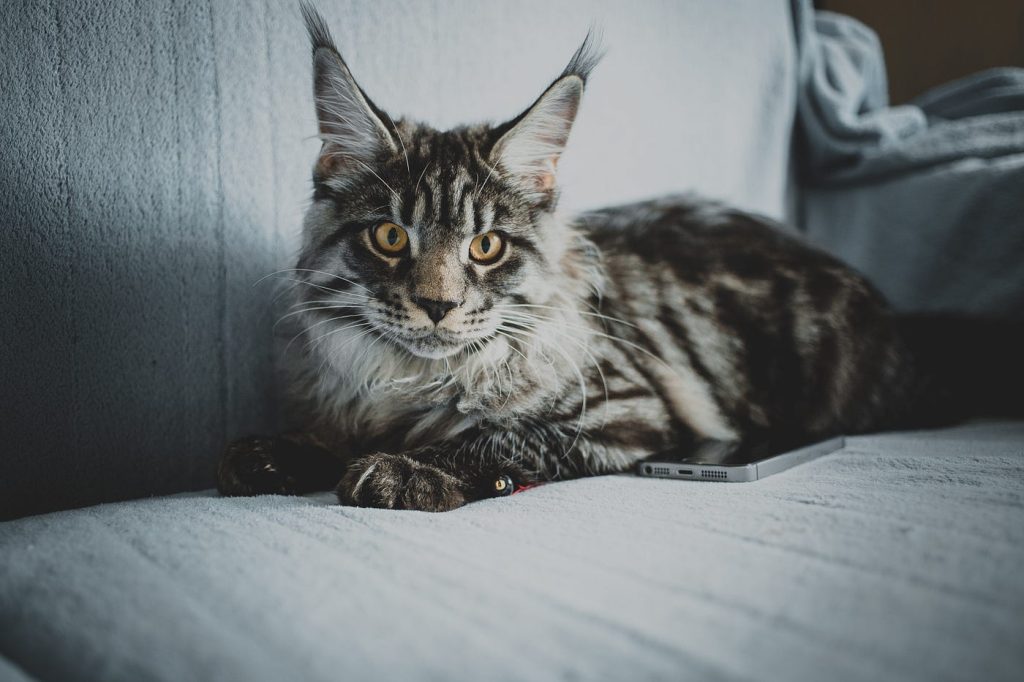
This American sweetheart has won worldwide fame as a friendly gentle giant that plays gently with kids. Most Maines seem to intuitively understand little humans still learning pet manners, making them ideal for households with toddlers and tweens alike. Their intelligence also facilitates training if boundaries need reinforcing. And fluffy Maine Coons love adventure – be prepared for them to retrieve toys and go on walks!
Great matches for kids because they:
- Boast very patient, kind personalities
- Are sturdy enough to handle clumsy kid cuddles
- Have adaptable play styles suiting all ages
- Possess above-average intelligence and trainability
Ragdoll
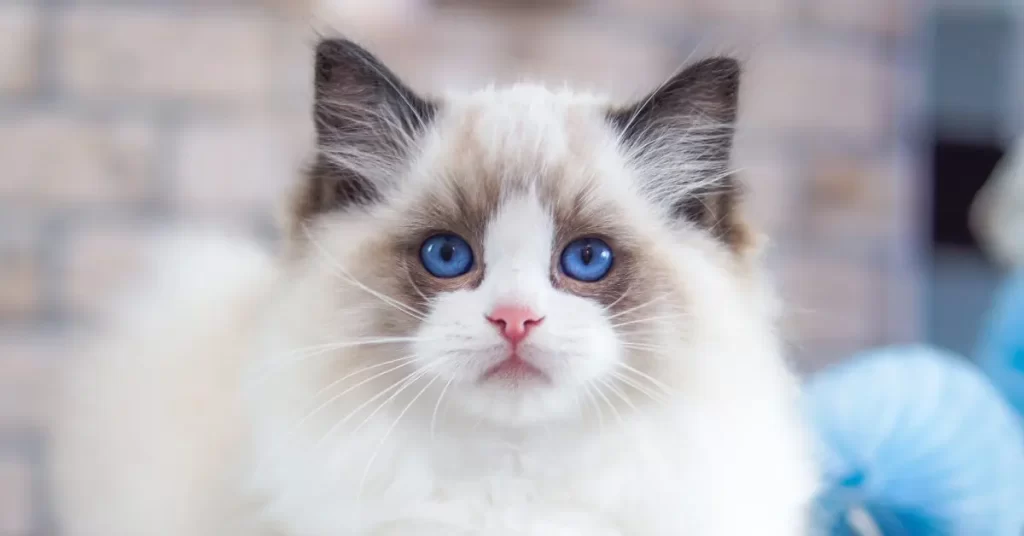
Like Maine Coons, laidback Ragdolls tend to relish interactions with respectful children. Their cushy fur absorbs grabs and pats most would find too rough, though kids should always receive gentle petting instruction. Smart and sweet-natured, this breed aims to please… and oft accepts dress-up outfits or stroller rides without fuss. Families welcome these devoted snugglers into the comforting chaos!
Ideal for households with kids because:
- Delightfully tolerant of handling
- Sweet, gentle and affectionate by nature
- Eager to participate in activities and games
- Learns quickly with consistent positive training
Bringing home a Maine Coon or Ragdoll while baby is young lets positive exposure help them grow into caring, responsible pet owners. Setting clear expectations and boundaries from the start prevents problems down the road too. But overall, these family-oriented breeds make fabulous companions for kids of all ages!
Best Low Maintenance Cat Breeds
While all cats require less effort than high-energy dogs overall, certain breeds still rate notably lower on the care and maintenance scale. For busy folks desiring good-natured furry company without the full fluffy commitment, check out these no muss, no fuss pedigrees!
British Shorthair

As quintessential apartment cats, British Shorthairs thrive just as well in small urban spaces as sprawling country houses. Minimal exercise needs mean they’ll snooze the day away just as happily without destroying your décor. Their short, plush coat also barely sheds and requires only weekly brushing to remove dirt. Overall an unfussy breed, the British Shorthair adapts well to any calm environment with minimal upkeep.
Easy ownership courtesy of:
- Couch potato tendencies with low exercise needs
- Short dense fur rarely tangles or sheds excessively
- Generally quiet and mannerly
- Eats scheduled meals without begging
Sphynx

While surprisingly snuggly considering its baldness, the Sphynx does require slightly more care than your average housecat due to lacking a protective fur coat. Their skin needs additional hydrating through baths and moisturizer to prevent problems. And those big bat-like ears demand gentle weekly cleanings. If you can keep up with their unique grooming needs though, their vivacious mischief and quirky charm makes up for the efforts tenfold!
Minimal hassle attributes:
- No shedding woes to clean up after
- Does not usually destroy furniture through scratching
- Tends to be very loyal to main caretaker
- Highly intelligent and training receptive
Opting for more self-sufficient cats like the British Shorthair or wrinkly Sphynx allows busy owners to enjoy dander-free feline snuggles without turning into full-on crazy cat people… though the label does provide street cred for couponing.
Choosing the Purrfect Cat for You
With exploration of your lifestyle, ideal cat characteristics and a survey of breeds, discovery of your family’s perfect feline friend awaits. Remember to think realistically about activity levels, maintenance and personality factors that facilitate future happiness together. Love blossoms when caring for a cat well-suited to your household situation. If challenges arise later, use the tips below to guide adjustments:
Kids too rough? Provide gentle behavior guidance and kitty safe zones they can retreat to when overwhelmed. Cat trees and wall shelves grant needed breathing room.
Destructive scratcher? Try clip-on plastic covers for furniture, sisal rope posts and placing double sided sticky sheets in tempting locations
Purrfers other humans? Shower kitty with play sessions, wand chasing and yummy treats. Added bonding strengthens your connection.
Mealtimes stressful? Feed cats in separate closed rooms to minimize competition.
Fine-tuning care of a fabulous feline rewards with years of devoted delight! But starting the search for your new BFF with realistic expectations of breeds sets up reciprocal happiness most.
Review the key considerations again:
- Personality and activity preferences
- Grooming maintenance abilities
- Health and trainability
- Kid/multi-pet household appropriateness
Finding your “purrfect match” becomes much easier with this decision guidance in mind. Soon you’ll be snuggling your new fuzzy soulmate by the fire as your fairy tale happily ever after unfolds. Congratulations future cat owner – may your new addition bring much joy and silly shenanigans your way for years to come!
Now head forth into your new adventure together confidently with this ultimate cat choosing resource by your side. Happy questing!
FAQs
Still have some unanswered questions in your cat selection journey? Check below for quick answers to common quandaries:
Yes, mixed breeds (especially from shelters or rescues) typically live longer on average and suffer fewer inherited illnesses compared to purebreds. Selective breeding unfortunately increases risks.
While individual personality differences always exist, certain breeds show more predisposition towards traits like intelligence, vocalization and cuddliness. Key examples: Siamese and Oriental Shorthairs tend extremely chatty, while Japanese Bobtails boast dog-like loyalness.
No-frills shorthaired tabbies and mixed breeds require the least grooming and typically maintain pleasant, adaptable attitudes towards apartment living, kids, other pets, etc. Think easygoing Casper-esque cat spirit!
With their lower inbreeding rates, mixed breed domestic cats hold current longevity records. But breed-wise, Siamese/Oriental Shorthairs often reach 15-20 years. Diet, exercise and vet care clearly factor in too!
While not eager people-pleasers by nature, cats CAN learn tricks and other positive behaviors through consistent reward reinforcement. Breeds like Manx, Bengals and Savannahs tend to pick up on training more readily.
Conclusion
Selecting that one glorious ball of fluff to unite with your family presents both an exciting chance and serious decision! Keeping key considerations like individual personalities, grooming/health predispositions and your unique lifestyle needs allows smarter cat choosing with
confidence. Whether you crave a devoted lap warmer or lively adventure pal, special breeds exist suiting every situation and hope.
Hopefully this guide provided ample food for thought and helpful pointers during your search ahead. Outlining realistic preferences, care capability and ideal feline temperaments first smooths the quest for quality cat companionship. Remember to also prepare your home fully for incoming kitties with safe sanctuaries, open litter spots and plenty of play outlets. Soon you’ll meet the bright-eyed charmer destined as your new co-pilot into blissful cat cohabitation!
Wishing you much joy and laughter with the fabulous furball newcomer in your imminent future. May the purrs, playtimes and 3am zoomies brigade bless your days delightfully ahead. Congrats on opening both your home and heart to share in a brand new friendship and tiny pawprint on your soul. Here’s to many snuggly memories in the making!

